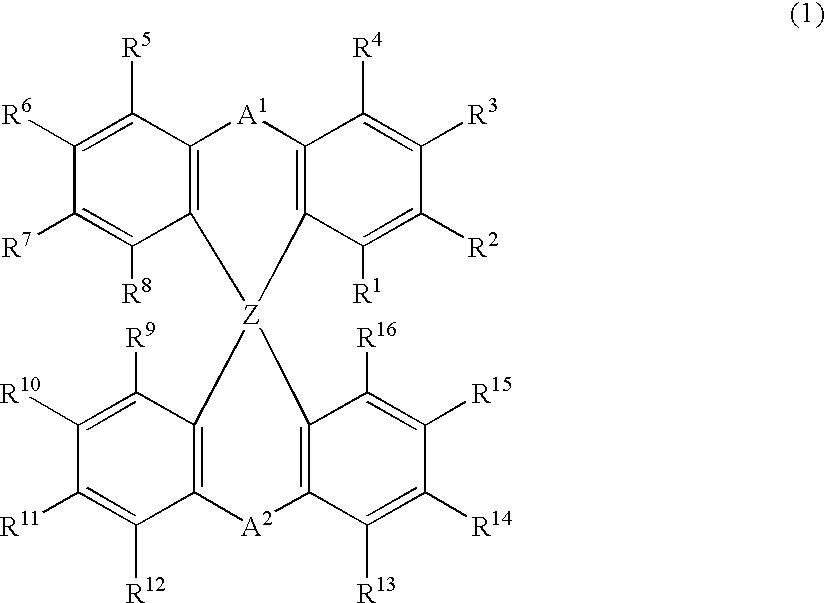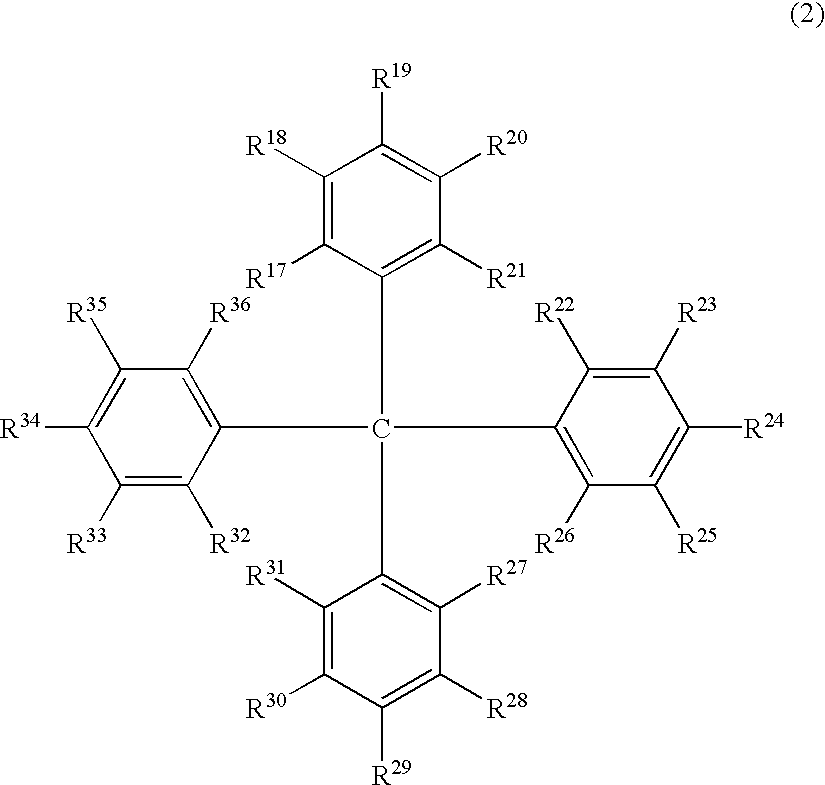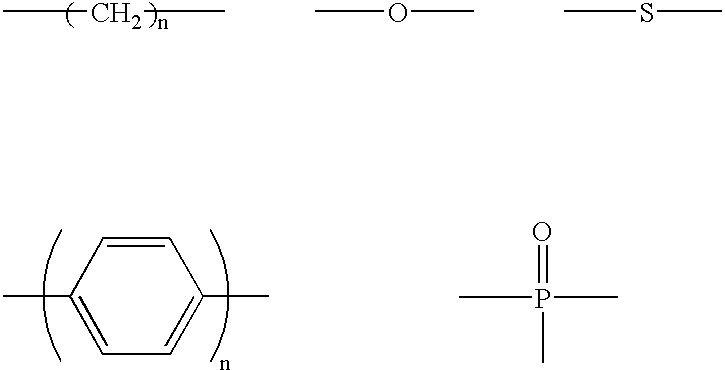Luminescent element material and luminescent element comprising the same
a technology of luminescent elements and material, which is applied in the direction of discharge tube/lamp details, group 5/15 element organic compounds, diaryl/triaryl methane dyes, etc., can solve the problems of thin film clouding, poor durability, and shorten the life of the devi
- Summary
- Abstract
- Description
- Claims
- Application Information
AI Technical Summary
Problems solved by technology
Method used
Image
Examples
example 2
Synthesis of Connecting Unit 2
[0100] 11.9 g of 2-bromobiphenyl was converted to the Grignard form in THF using 1.7 g of metal magnesium, then this reacted with 13.4 g of 2,4-diethyl-9-thioxanthone at from room temperature to 50.degree. C. and, by treatment in the normal way, 2,4-diethyl-9-(2-biphenyl)-9-thioxantheno-l was obtained. This was heated in acetic acid to which a small amount of hydrochloric acid had been added, so that water was eliminated and, by treatment in the usual way, Connecting Unit 2 (13.8 g) shown below was obtained. .sup.1H-NMR (CDCl.sub.3, ppm): 7.8 (m, 2H), 7.6 (d, 2H), 7.4 (m, 3H), 7.2 (m, 2H), 7.1 (t, 1H), 6.9 (s, 1H), 6.8 (t, 1H), 6.5 (d, 1H), 6.2 (s, 1H), 2.9 (m, 2H), 2.3 (m, 2H) 1.4 (t, 3H), 0.9 (t, 3H) 35
example 3
Introduction of Acetyl Groups into Connecting Unit 1: Connecting Unit 1'
[0101] Connecting Unit 1 (8.5 g) was reacted with 4.5 g of acetyl chloride and 7.5 g of aluminium chloride at 50.degree. C. in 1,2-dichloroethane and, by treatment in the normal way, Connecting Unit 1' (13.1 g) shown below was obtained. .sup.1H-NMR (CDCl.sub.3, ppm): 8.0 (d, 1H), 7.9 (d, 2H), 7.8 (d, 1H), 7.7 (s, 1H), 7.4 (t, 1H), 7.3-7.1 (m, 5H), 7.0 (s, 1H), 6.8 (t, 1H) 6.3 (d, 1H), 2.5 (s, 3H), 2.3 (s, 3H) 36
example 4
Synthesis of the Benzoquinoline Derivative (BQ-1))
[0102] 23.8 g of 2-bromobiphenyl was converted to the Grignard form in THF using 3.4 g of metal magnesium, then this reacted with 18.0 g of 9-fluorenone at from room temperature to 50.degree. C. and, by treatment in the normal way, 9-(2-biphenyl)-9-fluorenol was obtained. This was heated in acetic acid to which a small amount of hydrochloric acid had been added, so that water was eliminated and, by treatment in the usual way, Connecting Unit 1 (18.5 g) was obtained. Next, Connecting Unit 1 (15.8 g) was reacted with 8.6 g of acetyl chloride and 14.7 g of aluminium chloride at 50.degree. C. in 1,2-dichloroethane and, by treatment in the normal way, 2,2'-diacetyl-9,9'- spirobifluorene (11.2 g) was obtained. This diacetyl compound (2.3 g) was reacted with 2.0 g of 1-amino-2-naphthalenecarbaldehyde and 1.6 g of potassium hydroxide at 60.degree. C. in dioxane and, by treatment in the normal way, there was obtained BQ-1 (1.5 g) shown below....
PUM
| Property | Measurement | Unit |
|---|---|---|
| Angle | aaaaa | aaaaa |
| Current | aaaaa | aaaaa |
| Current | aaaaa | aaaaa |
Abstract
Description
Claims
Application Information
 Login to View More
Login to View More - R&D
- Intellectual Property
- Life Sciences
- Materials
- Tech Scout
- Unparalleled Data Quality
- Higher Quality Content
- 60% Fewer Hallucinations
Browse by: Latest US Patents, China's latest patents, Technical Efficacy Thesaurus, Application Domain, Technology Topic, Popular Technical Reports.
© 2025 PatSnap. All rights reserved.Legal|Privacy policy|Modern Slavery Act Transparency Statement|Sitemap|About US| Contact US: help@patsnap.com



